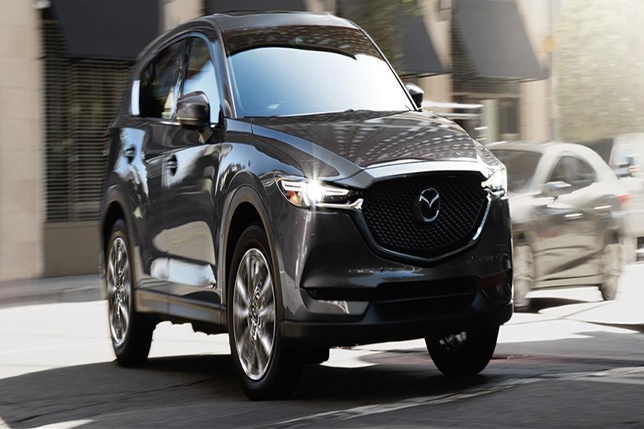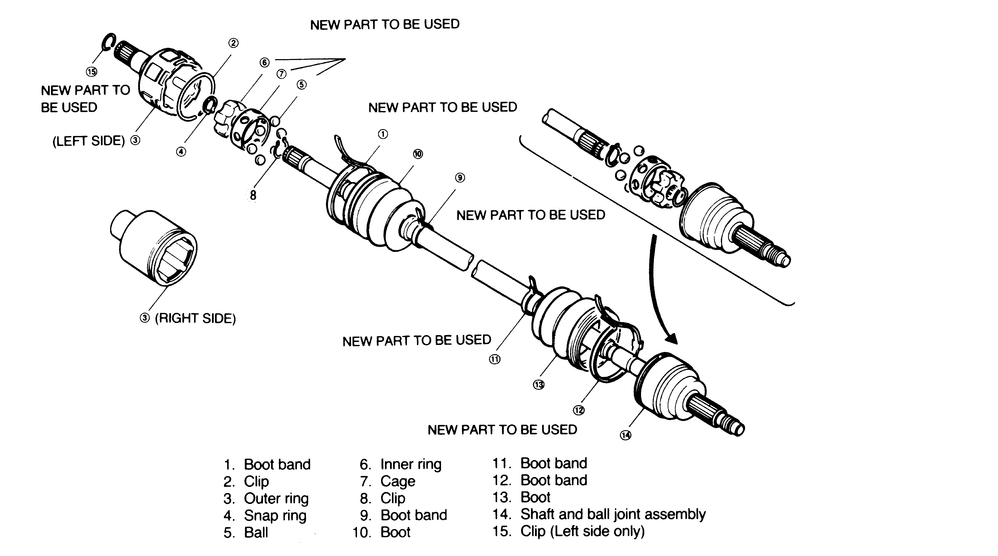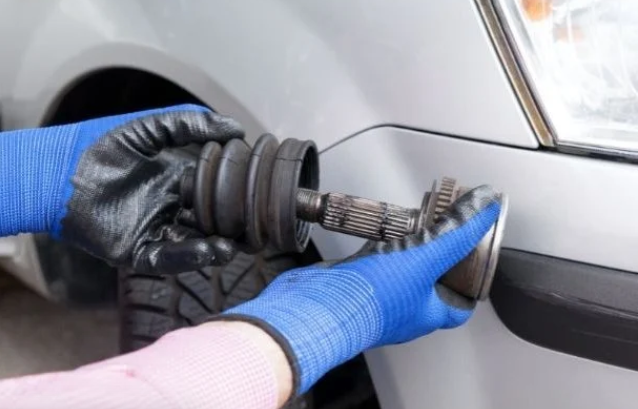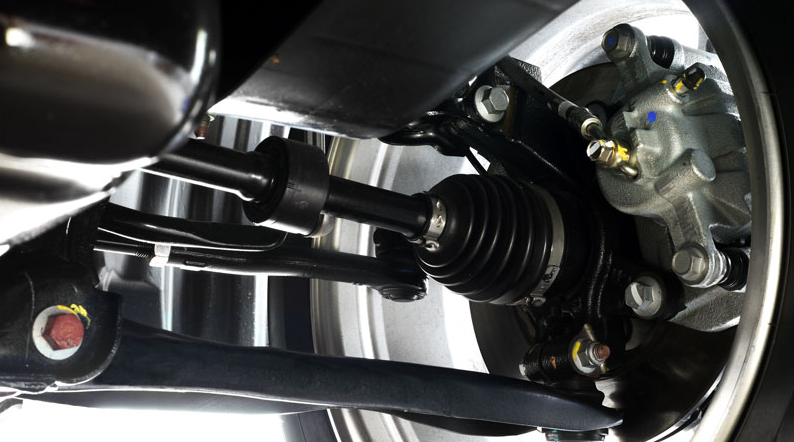If you’re suffering from Mazda CX-7 CV joint problems, you’re not alone. This is a typical issue with this car, and dealing with it can be a real hassle. In this blog post, we’ll discuss some of the common issues that can cause CV joint problems and what you can do to fix them.
When My Mazda Cx-7 Joint Goes Bad What Should I Do
Contents

Mazda CX-7 CV Joint problems can occur after long periods of driving or if the car is driven on rough roads. The CV joint is located at the end of the axle and connects the axle to the wheel. The joint allows the wheel to turn while the axle remains stationary. Over time, the joint can become worn, making it difficult for the wheel to turn. In some cases, when my Mazda CX-7 joint goes bad what should I do can? Because it can lead to a complete loss of power to the wheel, making it impossible to drive.

Top Mazda CX-7 CV Joint Problems
The following are the top Mazda CX-7 CV joint problems;
1. Ineffective Turbocharger of Mazda CX-7 CV joint problems
The Mazda CX-7’s turbocharger is notorious for frequently failing, which results in a lack of power and acceleration. White smoke emerging from the exhaust is another sign of a failing turbo in addition to the lack of acceleration and power. If you have these signs, replacing the turbo will probably be necessary to fix the problem.
2. Depressing Engine Noise
One of the most prevalent Mazda CX-7 CV joint problems is a worn timing chain that makes an unwelcome clanking noise from the front of the engine. You will typically need to change the timing chain to solve this issue.
3. AC Compressor Failure
Another frequent Mazda CX-7 CV joint problems faced by customers is AC compressor failure. You replace the failed AC compressor to fix the problem. Fortunately, Mazda has acknowledged the problem and extended the compressor warranty.
4. Transmitter Issues
Transmission issues with the Mazda CX-7 frequently manifest as grinding or jumping when accelerating, delayed shifts, engine noises that sound like whistles, shaking when driving, or a burning odor emanating from under the hood. If you ignore these transmission problem symptoms, your fuel economy may start to decline, and in severe situations, you may not be able to operate your vehicle at all.
What are CV Joints?
CV joints are an essential part of your vehicle’s suspension system, as they allow the axles to flex while turning. Without them, your car would not be able to make turns smoothly. Unfortunately, CV joints can wear down over time and may eventually need to be replaced.

How Do CV Joints Operate?
Two categories of CV joints exist:
- Ball-Type
- Tripod-Type
On both ends of the driveshafts of every front-wheel-drive car, there is a CV joint, or constant velocity joint. The driveshaft is connected to the transmission by the inner CV joints, and the wheels are connected to the driveshafts by the outer CV joints.
CV joints are also common in 4WD and rear-wheel drive vehicles. They are necessary to accommodate the suspension’s up and down motions as well as the constant torque transfer from the transmission to the wheels of your Mazda. Mazdas with front-wheel drive use CV joints to transmit torque to the front wheels when turning.
Warning Signs of Potential Mazda Cx-7 CV Joint Problems
- When the car is moving, there is a vibration
- Grease on the tires/wheels
- The CV joint is making a knocking sound
- loud popping or clicking noises as the wheel is turned
- while traveling on a flat road while bouncing
Symptoms of a Faulty CV Joint
A failing CV joint will produce a distinctive clicking noise when turning the steering wheel. This is usually most pronounced when turning at low speeds. The noise is caused by the CV joint moving in and out of its housing as it attempts to compensate for the change in angle.
Other Symptoms of a Failing Mazda Cx-7 CV Joint Problems
- Vibration in the steering wheel
- The steering wheel feels loose
- Popping or clicking noises when accelerating or decelerating
- Clunking noises when shifting gears
- Uneven tire wear
Causes of CV Joint Failure
Most people are familiar with the clicking sound that can come from the front of their car as they make a turn. This is usually caused by a problem with the CV (constant velocity) joints on your driveshaft. The CV joint is what allows the driveshaft to keep spinning even as the suspension moves up and down, and it’s filled with grease to keep it lubricated. Over time, this grease can break down and allow dirt and water to get in, which can cause the CV joint to fail.
There Are a Few Other Reasons Why CV Joints Might Fail, Including:
- Worn-out bearings: The bearings inside the CV joint can wear out over time, causing it to fail.
- Misalignment: If your suspension is misaligned, it can put stress on the CV joint and cause it to fail.
- Damaged boots: The boots that cover the CV joint can tear or leak, allowing dirt and water to get in and damage the joint.

How to Diagnose CV Joint Problems – 4 Diagnostic Ways
If you’re hearing a clicking noise when turning the wheel of your Mazda CX-7, there’s a good chance that you have a problem with the CV joint. The CV joint is responsible for connecting the axle to the wheel, and if it’s not working properly, it can cause all sorts of problems. Here’s how you can diagnose CV joint problems on your Mazda CX-7.
- Look for signs of wear and tear. The first thing you’ll want to do is take a look at the CV joint itself. If you see any cracks or damage to the boot (the rubber casing that protects the inner workings of the joint), then there’s a good chance that the CV joint is starting to fail.
- Listen for clicking noises. Another symptom of a failing CV joint is a clicking noise that’s audible when turning the wheel. This noise is caused by the inner workings of the joint coming apart, and it’s a good indicator that there’s a problem.
- Check for uneven tire wear. Another symptom of a failing CV joint is uneven tire wear. This happens because the joints are not able to properly transfer power to the wheels, which causes them to spin at different speeds. This will lead to one side of the tire wearing down faster than the other side.
- Take your car for a test drive. The best way to confirm that there’s a problem with the CV joint is to take your car for a test drive. Pay attention to any clicking noises that you hear and keep an eye out for uneven tire wear. If you notice either of these things, then there’s a good chance that you have a problem with your CV joint.
Repair and Replacement Options
- If you’re experiencing Mazda CX-7 CV joint problems, you have a few different options for repair or replacement. You can either replace the entire CV joint or just the boot. You can also repair the CV joint by replacing the inner race, outer race, or ball.
- If you’re CV joint is damaged beyond repair, or if you simply want to avoid future problems, you can replace the entire CV joint. This is a fairly simple process and can be done at home with basic hand tools.
- If you only need to replace the boot, this is also a fairly simple process that can be done at home with basic hand tools. However, it’s important to note that if the boot is damaged, there’s a good chance that the CV joint itself is also damaged. For this reason, it’s usually best to just replace the entire CV joint.
- Finally, if you need to repair the CV joint itself, you can do so by replacing the inner race, outer race, or ball. These are all relatively easy repairs that can be done at home with basic hand tools. However, it’s important to note that these repairs may not last as long as a complete replacement of the CV joint.
Mazda CX-7 CV Joint Problems
Mazda CX-7 CV Joint Problems can occur after the vehicle has been driven for a while. The problem is caused by the constant velocity (CV) joints wearing out. The CV joint is what allows the axle to flex as the suspension moves up and down. When the CV joint wears out, it can no longer properly flex, which causes a number of problems.
FAQs
Q. What Are the Most Frequent Mazda Cx-7 CV Joint Problems?
The Mazda CX-7’s turbocharger is notorious for frequently failing, which results in a lack of power and acceleration. White smoke emerging from the exhaust is another sign of a failing turbo in addition to the lack of acceleration and power.
Q. How are Mazda CX-7 CV Joint Problems Diagnosed?
Go for a test drive. Reverse the vehicle. After that, drive backward in a circle while completely turning the steering wheel to one side. Repeat the operation by oppositely turning the steering wheel. There is a strong possibility that an outer CV joint is worn out if you hear a very noticeable clicking or breaking sound.
Q. How Long Does the Average CV Joint Last?
CV joints last from 70,000 to 130,000 miles and beyond; however, professionals advise that they be inspected regularly.
Conclusion
If you have ever taken your Mazda CX-7 out for a spin and felt a strange vibration, it may be time to check the CV joints. The CV joint helps connect the axle to the wheels, and if it becomes damaged, it can cause all sorts of problems. Then you can quickly resolve mazda CX-7 cv joint problems
Sources
- https://gtautomotive.com/most-common-mazda-cx-7-problems/
- https://www.realmazdaparts.com/blog/mazda-cv-joints
- https://www.yourmechanic.com/estimates/mazda/cx-7/axle-cv-shaft-assembly-replacement

